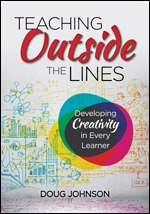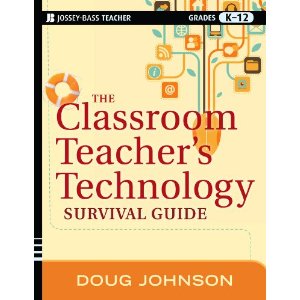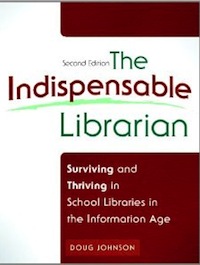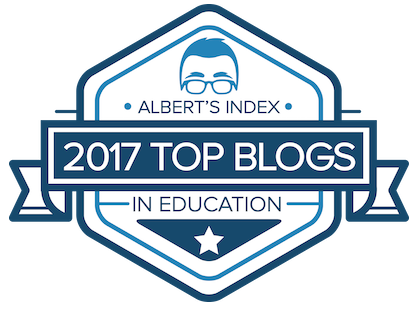CODE77 Rubrics for Administrators 2010 Part 9 of 10
 Wednesday, January 20, 2010 at 04:52PM
Wednesday, January 20, 2010 at 04:52PM I warned you these were coming.
Self-evaluation Rubrics for Basic Administrative Technology Use (2002) 2010
If you want to build a ship, don't herd people together to collect wood and don't assign them tasks and work, but rather teach them to long for the endless immensity of the sea. - Antoine de Saint-Exupery
IX. Envisioning, Planning, and Leading (TSSA Standards I.A, I.B, I.C, I.D, V.D) NETS-A, 2009 (1a, 1b. 1c)
Level One: I let others in my district or school create technology plans. We purchase equipment, software, and technical support on an “as needed” basis.
Level Two: I use software to facilitate brainstorming activities, to plan and conduct meetings, and to create decision-making models. I take an active leadership role in building and district technology planning efforts helping make decisions about hardware selection and acquisition, staff development in technology, and integration of technology into the curriculum. Our school and district have a model long-range plan and short-term goals for technology use that are regularly assessed and updated. I have a personal philosophy I can articulate regarding the use of technology in education.
Level Three: I have a leadership role in my professional organization that stresses the effective use of technology in education. I write and speak for my fellow practitioners on technology issues. I work to inspire others to use technology in support best practices in education.
Why school leaders need to be able to plan for and evaluate technology use in schools:
Schools have been spending a good deal of money on technology over the last decade. IT spending in education is expected to top $56 billion by 2012.* Computers, networks, printers, scanners, file servers, internet access, wireless routers, netbooks, and distance learning equipment CD-ROM drives and even interactive television facilities are common in most schools - perhaps not in the numbers many students, teachers or parents would like - but certainly in quantities which should suggest this investment should be having a major impact on education.
It is has been difficult for educators to describe and measure technology’s impact because schools do not use these tools in a single way for a single purpose. And rarely is technology use the only variable in attempts to improve student learning. Understanding the impact technology is having on education means understanding that there are four major uses of technology in schools, and that we need to plan for and evaluate each use. School leaders may not need to know all the technical details of a technology, but they do need to know enough about its uses to make good technology decisions and help others make them.
Use One: To improve administrative effectiveness through efficient communication, planning and record keeping. Like any large organization, schools use technology to improve daily operations. Administrative software packages keep student records, figure payroll, generate state reports, and schedule classes. Telephones, voice mail, e-mail, intranets, hosted applications and other websites use the power of networking to collect, distribute and update information. Web pages, desktop published documents, and video productions inform our communities.
Use Two: To provide access to current, accurate and extensive information resources for all learners in the district and community in a reliable, convenient, and cost effective manner. Technology connects all members of an organization to the resources they need. Whether it is a superintendent downloading the latest rule from the state department of education, a curriculum coordinator looking for federal grant information, a teacher participating in a mailing list discussion about a classroom management issue, or a student looking for a magazine article for a research paper, all learners in schools can use electronic information sources. Increasingly these resources are other human beings. Technology allows everyone - staff and students - to create and utilize personal learning networks of peers, mentors and experts.
Use Three: To provide teachers the tools and resources needed to assure students will meet local and state learning objectives and have the means to assess and record student progress. Teachers nearly always first use technology to enhance their professional productivity. This includes using specially designed teacher tools like computerized grade books, worksheet generators, and curriculum templates; generating more effective worksheets, study guides and tests using a word processor; and delivering more compelling lectures using a presentation program and interactive white boards. Professional productivity enhancement is where most educators start using technology to good effect. But technology use by teachers needs to evolve beyond enhancing traditional methods of instruction. Rather than the computer simply being a tool that allows a common task to be done more efficiently, evolved technology skills modify how instruction is delivered, how student performance is measured, and how teachers view themselves as professionals
Use Four: To allow students to learn and demonstrate the mastered use of technology to access, process, organize, communicate and evaluate information in order to answer questions and solve problems. The most powerful use of technology in schools by students is as an information-processing and productivity tool. The use by students at all grade levels of real-world productivity software like word processors, databases, spreadsheets, presentation programs, multimedia authoring tools, e-mail, video production equipment, digital reference materials, electronic indexes, and network search engines to complete complex, authentic projects is the proper instructional use of technology. Here students will be asked to complete tasks similar to those they will be asked to do in jobs which require using information to solve problems - the kinds of jobs which are both better paying and give greater job satisfaction. The product of such instruction, however, is not a neatly quantifiable score on an objective, nationally normed, quickly scored test.
Long-range goals and annual objectives need to be articulated, assigned, scheduled, evaluated and reported for each of these major areas of technology use. Assessment of technology use needs to be done less to satisfy a state department, legislature, or academic body, but to inform the students themselves, their parents, and the community the impact technology is having on their schools.
Leaders in schools must take an active role in creating a shared vision of how technology supports student learning. As Seneca long ago observed, "When a person does not know what harbor he is making for, no wind is the right wind."








Reader Comments